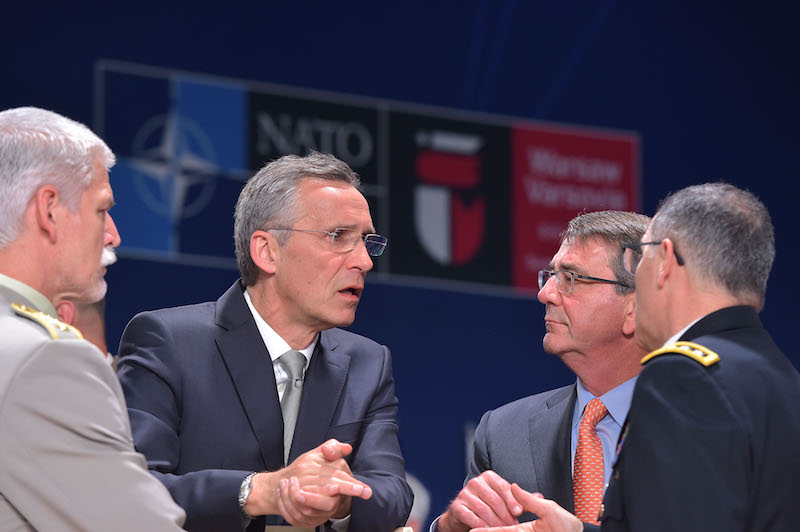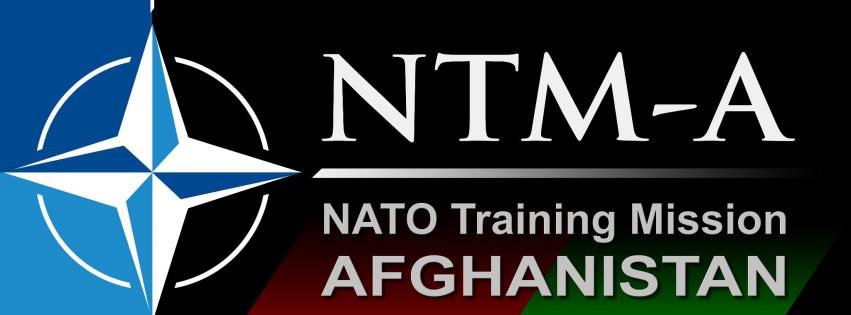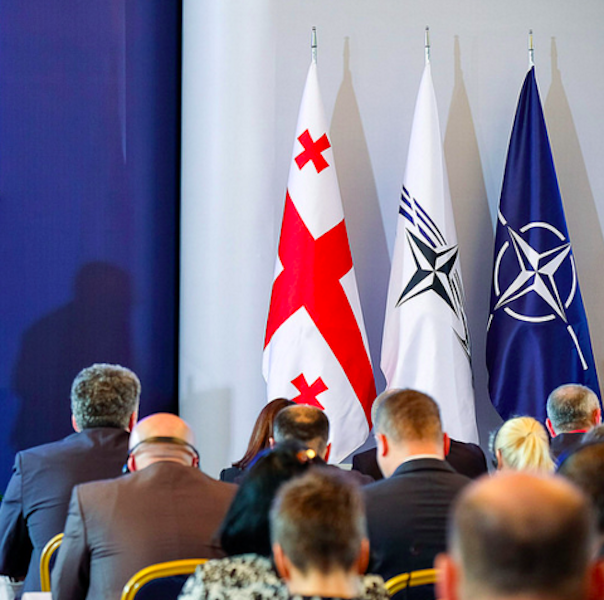Derek Burney and Fen Hampson’s book, Brave New Canada, is one of the few distinctly Canadian foreign policy books published in recent years. Burney and Hampson examine a multitude of challenges facing Canada in the 21st Century, everything from Canada-US relations, diminished multilaterism, global economic transformations and global security threats. However, one of the most interesting policies Burney and Hampson recommend Canada pursue in the next 20 years is the Democracy 10 (D-10) initiative. They only outline the basic functions of the political initiative, but a closer examination reveals that the D-10 may strengthen NATO’s effectiveness in an increasingly complex world.
The original term and concept D-10 came from an article written by David Gordon and Ash Jain for the Wall Street Journal called Forget the G-8. It’s Time for the D-10. This seminal paper would lay the ground work for the concept which Burney and Hampson built upon throughout their recent book.
Canada is in a unique position to advocate the creation of a D-10 group, because the first informal meeting was held in Toronto. In 2008 the U.S. State Department launched an initiative policy-planning directors from several democratic countries who had gathered in Toronto to start a new dialogue on global challenges. All of the participants were strategically like-minded. The original group included the U.K. France, Germany, Italy, Canada, Japan, Australia and South Korea. If the D-10 were expanded to include the whole European Union the resulting D-10 would account for more than 60 percent of global GDP and three-fourths of the world’s military expenditures. They would represent a significant portion of the world’s economic and military power.
As Burney and Hampson discuss at length in their book, the international community is clogged with multiple multi-lateral institutions. They argue “the attractiveness of the D-10 concept is that it does not call for the creation of yet another new international organization.” They view the potential discussions between D-10 countries as being complementary to existing institutional networks. The creation of this informal democratic group would not weaken NATO, but actually strengthen the Alliance.
A weakness of the Alliance is that further membership is restricted to European states. According to Article 10 of Washington Treaty, the founding treaty of NATO, “the Parties may, by unanimous agreement, invite any other European State in a position to further the principles of this Treaty and to contribute to the security of the North Atlantic area to accede to this Treaty.” The Washington Treaty was signed in 1949 at the beginning of the Cold War and reflected the realities of the international system in the mid-20 century. There has been an immense change to the world order since then, which has raised concerns about NATO’s relevance in the 21st century.
The Council on Foreign relations has argued that “NATO must expand its traditional understanding of collective defense to confront the twenty-first-century threats of terrorism, proliferation of weapons of mass destruction to both states and nonstate actors, and cyberwarfare.”
NATO has taken some small steps to offering membership to traditionally non-European states. Individual Partnership Action Plans, the first official step to membership, has been offered to Azerbaijan, Armenia and Kazakhstan. These countries are all within the Asian continent and at one time represented the future direction of NATO, but current confrontations with Russia have slowed this policy objective.
The NATO summit in Madrid in 1997 outlined two important objectives for the Alliance. The two pillars were enlargement on the one hand, and a new quality of NATO-Russia relations on the other. These policy objectives were supposed to be equally important, but enlargement seems to have been counter productive to improving relations with Russia.
There has been some debate of extending membership to Mexico considering the interconnectedness of North America’s security apparatus. However, to date there has been little movement. Mexico has not even been invited to participate in Partnership for Peace initiatives, while other states on Europe’s periphery have. Mexico is only one example of states that would further NATO’s strategic interests, but have not been offered membership or even partnership.
NATO has taken a patch-work approach to friendly states around the world. NATO currently has understandings across the globe with Australia, Japan, New Zealand, the Republic of Korea, Mongolia, Iraq, Afghanistan, Pakistan and Iraq. These are not formal partnerships, but do allow these partners the same access to all of NATO partnership activities. Many of these global partners share common foreign policy objectives and are mature democracies. A deeper cooperation with NATO countries would be beneficial. It would allow better coordination when responding to terrorist threats and its growing natural disaster relief program.
Full-membership in NATO may not be immediately achievable, but the D-10 initiative provides the world’s major democracies with a medium term solution. According to Burney and Hampson a D-10 group could provide the requisite economic and diplomatic resources necessary to address certain global threats. NATO could provide the necessary military resources to strengthen free institutions. As mentioned previously the D-10 would not be a formal institution and could be used as an informal forum to coordinate a multitude of responses to a global crisis, which NATO could be a part of.
Coordination amongst potential members of a D-10 group has led to terrorist plots being foiled. Minister of Public Safety and Emergency Preparedness, Ralph Goodale, said that the recent foiling of a terrorist plot in Strathroy, Ontario, was a result of ongoing intelligence sharing between the countries in the Five Eyes program. This success demonstrates the cooperation that already exists between potential D-10 member states. NATO could be complimentary to the D-10 initiative providing much need military infrastructure to the informal group.
The global community faces rapidly changing security threats and Burney and Hampson’s D-10 initiative could provide democracies with the flexibility to address these challenges in conjunction with NATO. It would also increase the economic, political and military clout of all the group’s members and allow them to effectively pursue foreign policy strategies and goals. In a world in chaos clarity is needed.
Photo: NATO Military Chairman Petr Pavel, NATO Secretary General Jens Stoltenberg, US Secretary of Defence Ashton Carter, and Supreme Allied Commander Europe, General Curtis Spacarrotti (2016), via NATO.
Disclaimer: Any views or opinions expressed in articles are solely those of the authors and do not necessarily represent the views of the NATO Association of Canada.




